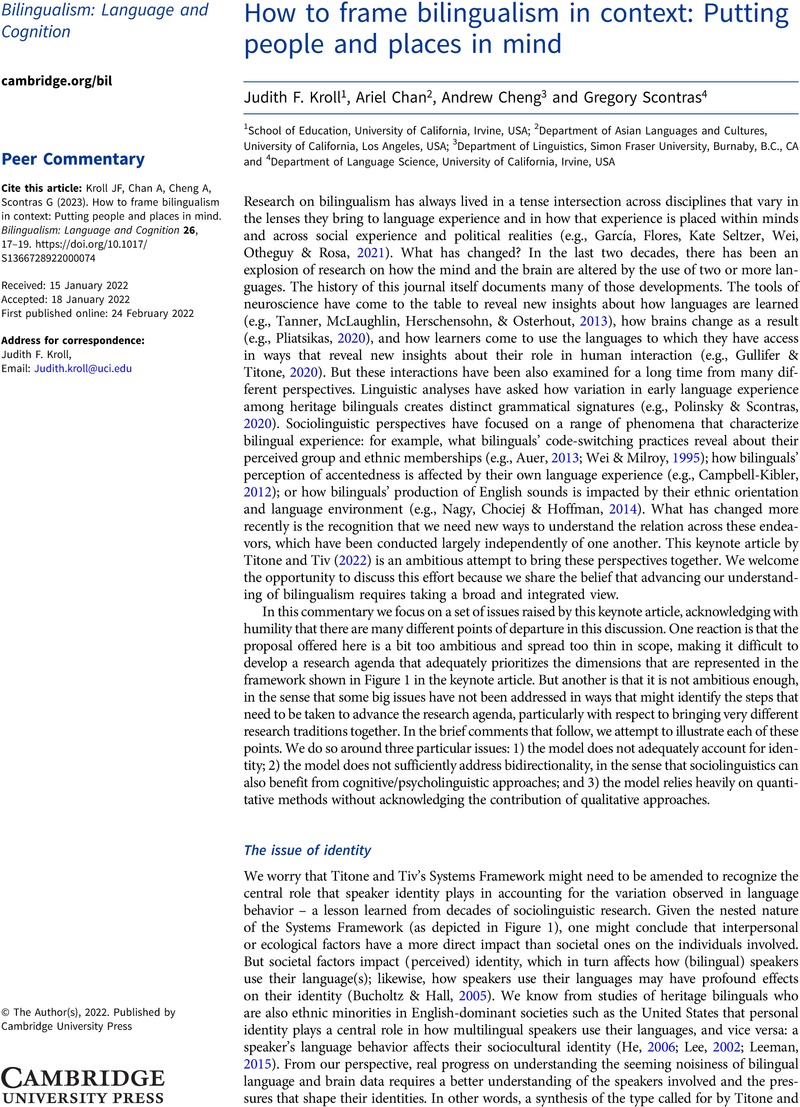Crossref Citations
This article has been cited by the following publications. This list is generated based on data provided by Crossref.
Abutalebi, Jubin
and
Clahsen, Harald
2022.
Words in the non-native mind: Developing lexical representations in the L2.
Bilingualism: Language and Cognition,
Vol. 25,
Issue. 2,
p.
183.
Cheng, Lauretta S.P.
and
Namboodiripad, Savithry
2024.
Reference Module in Social Sciences.
Bajo, Teresa
and
Wodniecka, Zofia
2024.
Networks of Collaboration as a Necessary Tool for Bilingual Research.
The American Journal of Psychology,
Vol. 137,
Issue. 2,
p.
137.
Frederiksen, Anne Therese
and
Kroll, Judith F.
2024.
Management of mispredictions in English language users from a varied language community.
Journal of Cultural Cognitive Science,





Target article
Rethinking multilingual experience through a Systems Framework of Bilingualism
Related commentaries (7)
Bilingual language cognition as a complex adaptive system
Challenges of Complexity, and Possible Solutions: a Commentary on Rethinking Multilingual Experience through a Systems Framework of Bilingualism by Titone and Tiv
Exploring nuance in both experience and adaptation: Commentary on Titone and Tiv (2022)
How to frame bilingualism in context: Putting people and places in mind
Sociocultural dimensions of early dual language learning
The Importance of Recognizing Social Contexts in Research on Bilingualism
The systems framework dispels causal illusions and organizes multi-causal models
Author response
Rethinking Multilingual Experience through a Systems Framework of Bilingualism: Response to Commentaries